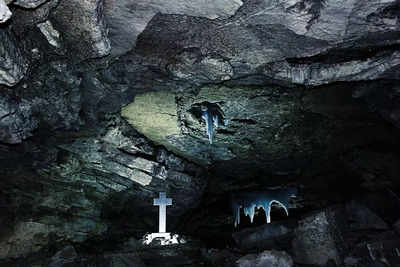- News
- Cave of death: Where is it located and why is it called so?
Cave of death: Where is it located and why is it called so?
Costa Rica's Alajuela Province is home to the deadly 'Cave of Death,' where carbon dioxide continuously seeps, creating an asphyxiating environment. The cave is a mere six feet deep and emits up to 30 kilograms of CO2 every hour, forming a lethal trap for any living being venturing too close due to its geological alignment near the San Miguel fault.
Can you imagine a place on the Earth, where fire burns into complete darkness and fumes and you get killed just by breathing the air as you get in? This might just look like a scene from a fiction movie but this is not a lie!
Costa Rica's Alajuela Province encapsulates a fissure known as the Cueva De La Muerte, or ‘the Cave of Death’. In the first, this small cavity which is merely six feet deep and ten feet long, appears harmless. However, as one gets near its shadowy walls, the threat increases, and is likely to claim lives with a frightening silence that isn't about predators or venomous snakes. The true danger here is the very air you breathe.
‘The Cave of Death’ poses the threat through an invisible killer that is the carbon dioxide (CO2). Youtuber ‘Explorer Guy’ van Rentergem, who investigated the cave in 2022, unveiled this in a YouTube video, stating, “This is a very small cave, but it’s unusual in that there’s a substantial seep of carbon dioxide gas coming.”

Why does CO2 in the cave have deadly effects?
The Cave of Death is dangerous due to the very high concentrations of carbon dioxide, CO2. CO2 is denser than air, thus it will sink to the bottom of the cave, causing an asphyxiating environment. The gas is colorless and odorless; hence it can only be identified with special equipment. Upon inhaling a very high concentration of CO2, it pushes oxygen out in the blood stream causing rapid asphyxiation. It means that with its continuous emission coming from the near San Miguel geological fault, added to its entrapped cave, it's already a killer cave for any organism trying to close by.
End of Article
FOLLOW US ON SOCIAL MEDIA










